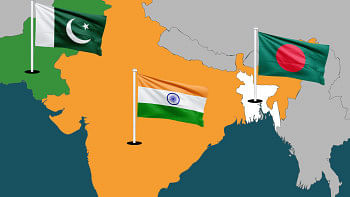Do our female workers have access to their health rights?

According to the International Labour Organization's (ILO) flagship report titled World Employment and Social Outlook: Trends 2018, female employment in Bangladesh has seen a 35 percent increase, reaching 18.1 million from 2008 to 2017, while male employment has seen an 11 percent increase, reaching 45.7 million. Higher growth in female employment was fuelled by the industrial sector, especially the apparel industry and services sector. However, the agriculture sector still employs the highest number of women, employing 10.9 million workers.
The US State Department's Office of Investment Affairs' 2015 Investment Climate Statement stated that Bangladesh has labour laws that specify employment conditions, working hours, minimum wage levels, leave policies, health and sanitary conditions, and compensation for injured workers. In practice, compliance and enforcement of labour laws are inconsistent, and companies frequently discourage the formation of labour unions. Even if male and female workers work the same number of hours, they end up getting paid different amounts. There is no specific ILO convention to address sexual harassment and violence at the workplace, but these protections are called for in numerous other conventions. The Bangladesh Labour Act (BLA) offers limited protection with only the following provisions—women cannot be forced to work between 10 pm at night and 6 am in the morning without their consent and there can be no indecent behaviour towards female workers in the workplace.
In 2009, a High Court ruling in response to a petition filed by the Bangladesh National Women Lawyers' Association (BNWLA) set out guidelines for protection against sexual harassment at workplaces and other institutions. It defined what constitutes sexual harassment and asked authorities to set up sexual harassment complaint centres at all workplaces. While this set a legal precedent, this ruling is still not widely implemented.
Internationally, workplace safety and health standards for pregnant and nursing mothers are high. Under the ILO conventions, they cannot be compelled to do work that poses a significant risk to the mother's and/or child's health.
The domestic scenario is not as comprehensive. The only allowance is that women who will have a child within 10 weeks or have had a child in the past 10 weeks (to the knowledge of the employer), are exempt from "arduous" work, work requiring them to be on their feet for a long time or any other work likely to harm their health. The BLA does not make any other specific provisions for female workers with regard to workplace safety and health.
Bangladesh has not signed the ILO convention on maternity protection—which allows for at least 18 weeks of maternity leave and an additional compulsory six weeks' leave after childbirth or more, in the case of complications.
In comparison, the BLA provides for 16 weeks of maternity leave—eight weeks prior to, and eight weeks following, delivery. Further time off for any complications after birth is not an option for Bangladesh's working women.
The ILO's maternity protection convention stipulates that female workers are entitled to a cash benefit that is sufficient to provide for both mother and child. In the Bangladeshi context, female workers are entitled to maternity benefit provided they have been at that job for at least six months before delivery. The amount of payment is an average of their wages, with no scope for assessment as to whether this amount is adequate for both mother and child.
What does stand out in our national labour law is that this maternity pay, in the case of the death of the worker, will be paid to her child or child's carer. In this regard, the BLA goes above and beyond international standards in providing protection to the worker's child.
New mothers are also entitled to nursing breaks at the workplace under this ILO convention. While the BLA has provisions for a separate room for nursing at the workplace, breaks are not mandated as under international law.
Internationally, employers have a legal responsibility towards not just the female worker but also her family members. Thus, childcare facilities are a must at the workplace according to international labour standards. However, Bangladesh is not a signatory to this particular convention on workers with family responsibilities.
Nationally, childcare facilities are only mandatory at relatively larger workplaces, with 40 or a higher number of workers, for children up to six years of age. In comparison, international standards require childcare facilities regardless of the size of the workplace.
A comparison of our labour laws and international standards reveals that while national laws generally align with the ILO core conventions, limited enforcement leads to limited protection for workers. The law also excludes workers in informal settings from these protections, limited as they are.
How well female workers in particular are protected by the law is shown by the fact that two ILO conventions specific to female workers, those on maternity protection and workers with family responsibilities, are yet to be ratified by Bangladesh.
Where recourse does exist, other problems arise. Labour rights organisations and labour law experts highlight lack of awareness in addition to lack of implementation as major drawbacks.
What little complaints mechanisms exist are not being used by female workers. If the effectiveness of these mechanisms can be demonstrated, female workers will be more confident in approaching the authorities to make complaints, as is their right.
Problems arise at court too. The labour courts are backlogged with cases and there is only one labour appeals court in the country. These represent further drawbacks to workers in general from getting justice in the labour courts.
Tasdidaa Shamsi is currently pursuing Doctor of Public Health degree at the Department of Social and Preventive Medicine at University of Malaya.

 For all latest news, follow The Daily Star's Google News channel.
For all latest news, follow The Daily Star's Google News channel. 



Comments